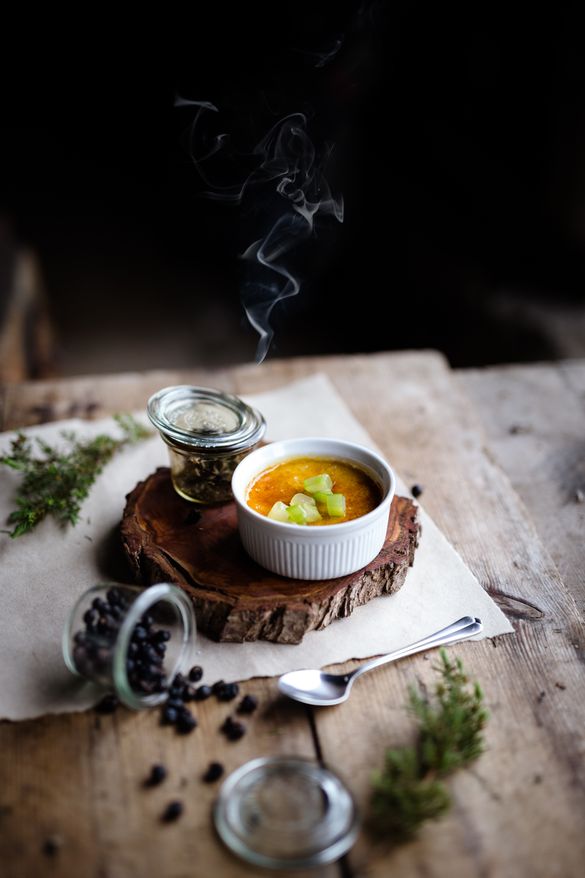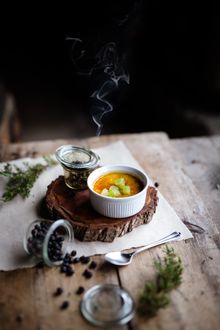 23 Aug 2022
23 Aug 2022
Tags: estonia, Baking, The Great British Bake Off, Bread, Bakery, Dessert, Food, Dairy, Cake

THE GREAT ESTONIAN BAKE OFF
September sees the return of the new series of the Great British Bake Off, with fans in the UK eagerly anticipating the weekly challenges set to test the contestants' skills. Bread is a symbol of Estonian cultural identity, and an essential element of every meal. There are bakeries found in every neighbourhood in Estonia, with people loyal to their favourite for a particular speciality.
With the Bake Off judges setting challenges inspired by cuisines from around the world, here are some Estonian suggestions to add into the mix.
Week 1: Bread Week
Considered a dietary staple, Estonians have had a love affair with bread for centuries. One of the most popular breads is Estonian black bread, a fermented rye bread. It has a sweet taste and is slightly moist, which also makes it a common base for a variety of desserts. This usage in desserts can be dated back to medieval times. Leivasupp is an example of a simple dessert combining black bread, fruit juice and berries. Estonian's use of black bread intensified throughout the Soviet occupation and today, on average, Estonians eat 30kg of black rye bread every year. Black bread is also used to make a popular snack called Küüslauguleivad, a fried black bread cut into strips and rubbed with a generous amount of garlic. It is usually crispy and served with garlic mayonnaise or even topped with cheese. So popular is this snack, it can even be found ready-made in supermarkets.
Week 2: Dairy Week
One of the most used dairy ingredients in Estonia is kohupiim, a fresh quark made from soured milk. Quark puddings and kohuke – chocolate-covered bars – can be found throughout the country. Kama is a heavily used Estonian ingredient made from the powder of toasted grains. This is mixed up with kefir – soured milk – to form a creamy kama mousse which is topped with a variety of fresh fruits to add sweetness.
Week 3: Cake Week
Estonia is home to a multitude of cafes, each offering a large selection of freshly made cakes and usually a house speciality. A well-known traditional sweet treat is the Estonian cookie cake. It's a no-bake cake that's perfect for any time of year and is easy to make. It consists of a series of generous layers of cookies, sour cream and strawberries, finished off with a moreish chocolate sauce and more strawberries. Estonians also have a love for honey cake, a sweet dish that is simple to make. The sweetness of the honey is contrasted by the addition of sour cream and is often topped with seasonal berries and seeds.
Another popular cake is kirju koer – Spotted Dog – which doesn't require any baking and only consists of four ingredients: cookies, butter, marmalade and cacao powder. It is an ideal combination of sweet and sour with the tartness of the marmalade pairing well with the bitterness of the chocolate and the sweet cookies.
Week 4: Mousse Week
Mannavaht is a semolina mousse that comes in a variety of different flavours including blueberry and raspberry. It is loved by Estonians as either a breakfast dish or a dessert and is often served mixed with cream and milk. Kissell is another popular dish among Estonians. It has a viscous texture that stops it just shy of being considered a mousse, as it can be eaten or drunk. Kissel is made of sweetened juices from a variety of berries, which is then thickened by adding corn starch, potato starch or arrowroot and often topped with a splash of red wine.
Week 5 – Dessert Week
Foraging is an intrinsic part of Estonian culture with homes featuring backyard apple orchards and fruit and vegetable patches. If they can't grow it at home, they head to farmers' markets or the forests and wetlands to pick cranberries, forest blueberries, and wild strawberries in their secret foraging spots. Sweet seasonal berries and fruit combine with creamy local dairy products, making the dessert menu an integral part of Estonian cuisine. Rhubarb is commonly grown in Estonian gardens in the spring, its definitive sour taste is a well-loved flavour in Estonian desserts including rhubarb pies. Modern dishes are usually inspired by traditional recipes passed down the generations. This recipe for cranberry jelly with kama foam and freeze-dried berries uses wild berries but with modern techniques.
Top bakeries and cafes to try on a visit to Estonia
RØST is very popular bakery close to Tallinn's Old Town and has a strong Scandinavian influence. They use natural leaven to bake sourdough breads and offer an interesting variety of sandwiches and delicious pastries. They also have a passion for coffee, and only use beans from Estonian micro-roasteries.
Karjase Sai, in Tallinn's Kopli district, celebrates all things bread and pastry. Popular breads served include large sourdough loafs, rye breads, brioches and a variety of baguettes. As well as bread, the bakery's rum and vanilla canalé and cardamom buns are popular, inspired by the owner's travels to Stockholm. In the evening, Karjase Sai becomes a restaurant and wine bar serving freshly made pizzas.
Saialill bakery near the centre of Tartu, sells a variety of fresh cakes, biscuits pastries and breads. One of the bestselling cakes is the kama cream cheesecake. It is handmade to order and consists of layers of buttermilk, whipped cream, cream cheese, jelly, and raspberries. Thursdays in the bakery are assigned to making sourdough bread, which takes three days to make and contains wheat flour as well as spelled flour. There are only four ingredients to the bakery's traditional sourdough bread: leaven, water, flour and salt.
Saiasahwer bakery in Tartu sell 15 different varieties of sweet pretzel and over ten different savoury pretzels, all freshly prepared. Customers can also buy chocolate chip cookies flavoured with chilli, mint or orange as well as a variety of sweet and savoury rolls and small cakes. For the gluten free traveller, there are a variety of options including a passion fruit or raspberry brownie.
Café Supelsaksad is found in a 150-year-old log house in Pärnu, Estonia's summer capital on the Baltic sea. The cafe's atmosphere is in keeping with the log house's classic design and enhanced by colourful furniture, lace, tablecloths and coffee sets. They offer a large variety of freshly baked buns and cakes as well as a great selection of tea and coffee. In 2010, Café Supelsaksad received an interior design prize from the Estonian Association of Interior Designers.
-Ends-
This project is in co-operation with Visit Estonia and funded by the European Union European Regional Development Fund
For further information on Visit Estonia: www.visitestonia.com/en/
For media enquiries, please contact the LOTUS team at estonia@wearelotus.co.uk / 0207 953 7470.
For high quality images, please click here

